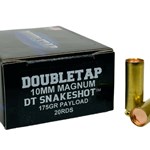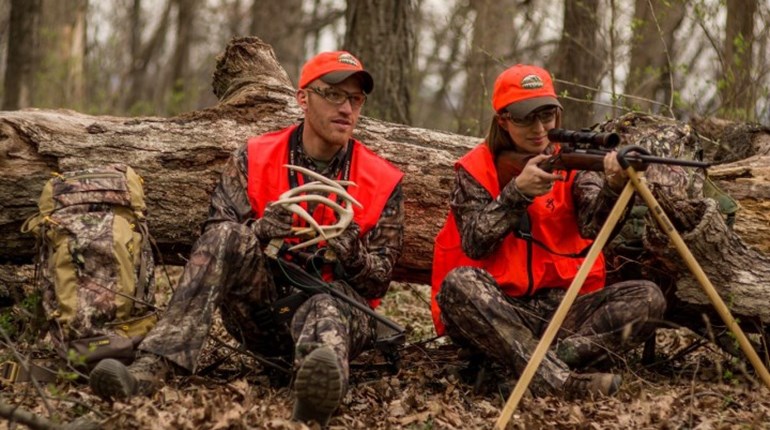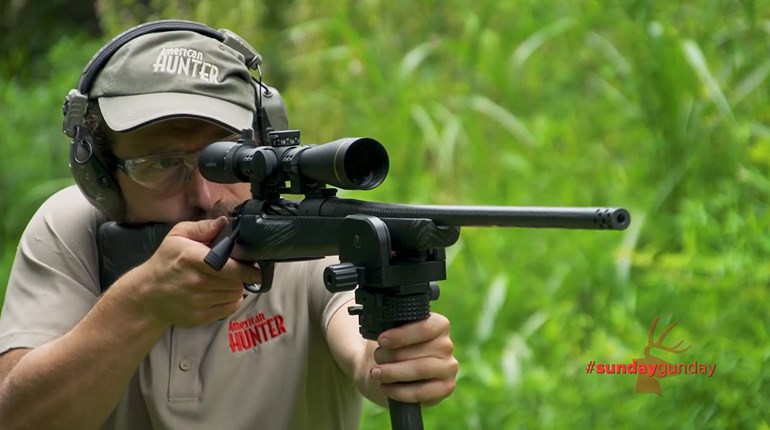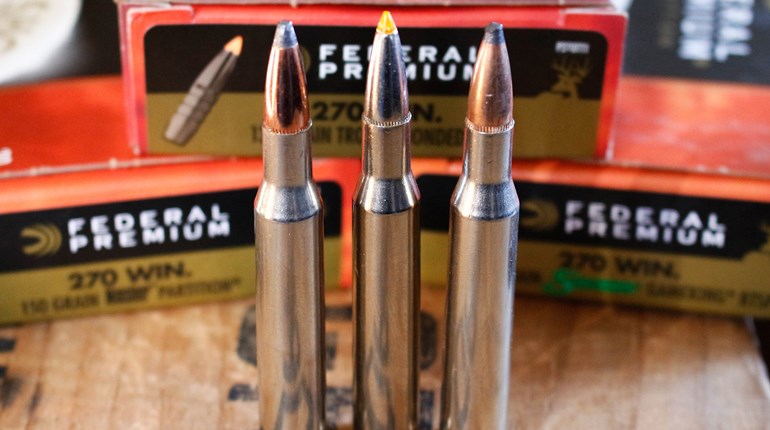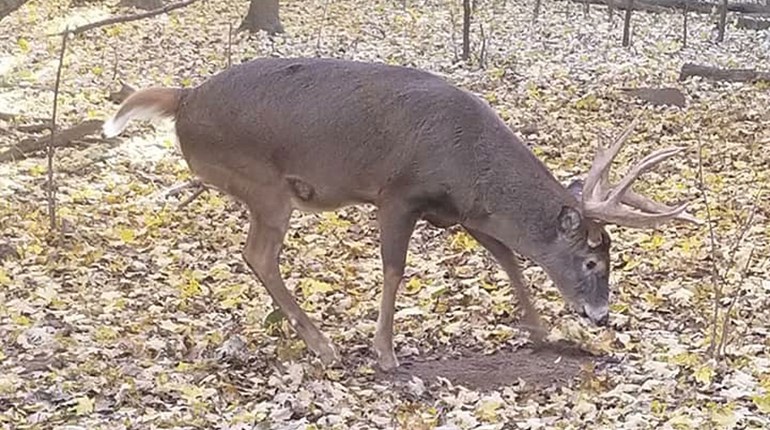I have been fortunate in recent years to be able to hunt my own land. I was in the right place at the right time back in the mid-to-late ’90s when recreational land was much cheaper than it is today; I scooped up as much as my income would allow. I benefit from that now in many ways. Not only did it prove a good investment, but I have the privilege of hunting deer over many years. These single-minded, multi-year quests have taught me many things about buck behavior. You might be surprised at what I learned—I know I was.
When we talked about writing this article, American Hunter Executive Editor Jeff Johnston said, “You know, Bill, this flies in the face of conventional wisdom.” Maybe it does, but then again, maybe conventional wisdom is exactly what is holding us back from becoming better deer hunters. My goal here is to debunk a few of the commonly held “truths” about buck behavior and thereby free you up to think for yourself about deer and deer behavior so you can be more successful.
Finding: Mature Bucks are Individuals
Most of the articles you read in hunting magazines and even the things you hear on hunting TV shows are generalizations that stereotype all bucks. Whenever I hear someone say, “Mature bucks do this …,” I tune him out. There are very few things that all mature bucks do. One buck lives one way and another lives completely differently. And to make things even more interesting, their personalities—if you want to call them that—can change dramatically from one year to the next.
You can stereotype young bucks, but to hunt mature bucks effectively you have to hunt them as individuals, which means you have to scout them as individuals (with an open mind). When starting in on a new buck, you have to throw out almost everything you think you know about older-age bucks and start with a blank slate. This is the thread that ties together the rest of the sections of this article.
Finding: Old Bucks Are Easier to Kill
This is another nugget that might surprise you. I know it surprised me. Thinking back, I am not sure I have ever hunted a buck that didn’t get easier to kill when he got old. By old, I mean 6 years or more. Granted, it is rare for most people to have the opportunity to hunt old bucks because in non-managed areas, most bucks get taken by hunters when they are younger. So if what follows doesn’t apply to you, I hope it is at least interesting.
Over the past five seasons, I have been sending in the incisors on the bucks we’ve shot on the farm to have them professionally aged. The method is called cementum-annuli testing. A lab technician sections the tooth and analyzes it to determine the age very accurately.
So I’m not guessing anymore when I say a certain buck was 6 years old, for example. Interestingly, my hunting partners and I have encountered, and killed, some really dumb-acting bucks over the years, and all of them ended up being 6 years old or older.
I remember one buck that came to a food plot during the December shotgun season in the middle of the afternoon. He walked right past the blind even though the three of us (cameraman, my son and I) were bumbling around like The Three Stooges inside, swinging the door open to get the shot, knocking the heater over, dropping a cell phone, getting burned—in general, making a racket. The buck never even looked our way as he passed at 30 yards. My son, Drew, killed him at 40 yards on the other side of the blind after we regained our mutual composure. That buck had been all over our trail-cameras in daylight that year, and we later learned he had been all over the neighbor’s camera as well. He was 8 years old.
I hunted a buck from 2006 through 2010 that I called “Jamie.” He was already mature when I started hunting him. I saw him twice in daylight in 2006 but not again until 2010. The buck was strictly nocturnal from all the photos we had of him in 2008 and 2009, but in 2010 he was quite the opposite. I finally killed the old buck on Nov. 22, 2010, just 150 yards from the house—the third time I had seen him that season and the second time within bow range. He was also 8 years old.
Neither of these old bucks was particularly big-antlered, but both were prized trophies because they were ancient. Their age made them trophies. But more to the point, their age also made them senile or maybe complacent—possibly just comfortable or lazy. I am not sure which of these apply—maybe all of them.
I could tell you many more stories like this—bucks we hunted for years that were ghosts for most of their lives then suddenly became the most visible deer on the farm when they got past a pivotal age.
In fact, I killed two of them last year. Both bucks were at least 7 years old. Again, I am not some kind of trophy buck Nazi that gets all militant if you shoot a 5- or 6-year-old buck. These bucks got old because I wasn’t able to kill them when they were younger. I tried. I hunted both of them for four years. They just got easier as they got older. I will profile their changing personalities over much of the remainder of this article.
Finding: The Buck Timeline
Those two old bucks had many things in common and many differences that made them fun to hunt and fun to study. Plus, I think it is just interesting to journal the twists and turns in their behavior.
I nicknamed the two bucks “Double G4” and “Loppy.” Not surprisingly, the names came from antler characteristics that each buck exhibited when he was young. I was aware of Double G4 when he was a 3-year-old, but didn’t start hunting him until the next year.
In 2009, both Loppy and Double G4 lived on the same ridge. A few times, I even saw them on the same day. I am guessing they were both the same age that year—4 years old. G4 was a mid-160s buck and Loppy was just cool looking, but not a high-scoring deer.
I was not able to kill either one. I saw both bucks a few times and got a number of trail-cam photos of them. But despite my best efforts to end it in 2009, the hunt for both bucks carried over to the next fall.
In 2010, Double G4 was still living more or less on the same ridge. He had grown into a high-170s buck and inspired awe on the two trail-cam photos I got of him that season. Loppy had moved about a quarter-mile to the west and had grown this neat multi-branching Christmas tree tine where one of his brows had been the year before. He was definitely cool.
In 2010, both bucks were 5 years old. I got only a few photos of them and all the photos were at night. I know I was in their core areas, but they just didn’t move much. Though I hunted that area (and those bucks) every day that I could, I never saw either one. So, the hunt carried over for another year.
As 6-year-olds in 2011, the bucks kept changing. G4 had bloomed into a monster, grossing well over 200 inches as a primarily typical-antlered buck, and Loppy had lost the Christmas tree—dang it! G4 was still in the same area where I started hunting him in 2009, but Loppy had moved another quarter-mile to the west. By moving cameras and using a system that evolved over the years, I was able to keep very close tabs on both bucks and learn a lot about them.
Well, Loppy remained nocturnal in 2011. We got a bit of summer video footage of him on beans in 2011, but we produced zero daylight photos or sightings during the season. G4 was just the opposite. Seemingly, he had done his time as a ghost and was ready for some daylight.
I killed another buck on that same ridge where G4 was living in November (I have two buck tags for the rut in Iowa, being a landowner). When that other buck was gone, G4 seemed to relish the sunlit open areas. He was the most visible deer on the farm. He was often the first deer (arriving even before the does) out in the afternoon to feed and would use the same area day after day.
Imagine a 200-plus-inch buck with such reckless behavior. He must have felt bulletproof. As a 6-year-old, G4 acted more like a 2-year-old. I would like to say I killed him that year, but I didn’t get it done. I had him within 40 yards three times but each time I messed up or he just got lucky. So the hunt for both Loppy and G4 spilled over into its fourth season.
As I have already mentioned, I was fortunate enough to kill them both in 2012, but again their personalities took some interesting twists. Loppy moved another quarter-mile west and G4 once again lived on the same ridge and was still highly visible. His entire range (as best I could tell) was about 30 acres. Think about a daylight-active 200-inch buck living in just 30 acres. I will never see an opportunity like that again as long as I live.
It was just a matter of time with G4. I hunted him carefully because it made no sense to hunt him aggressively—his behavior and history suggested he wasn’t going anywhere. After missing him from a blind at 30 yards in late October (I thought it was 40 yards), I killed him a few days later on Nov. 3 about 200 yards from that spot. I won’t say he was easy to kill—you still have to be careful to keep them from knowing you are hunting them—but he was the easiest buck to hunt that I have ever encountered.
I doubt G4 was actually dumb; to my knowledge, we never bumped him. So he never had a decidedly negative experience with people. It pays to be careful, but it pays even more to be lucky enough to have a buck with that kind of personality living on your farm.
Now back to Loppy. He was showing up on trail-cameras regularly but always at night. On Dec. 20, a big snowstorm came through and the next day was very cold—the perfect recipe for late-season success. I headed right to Loppy’s area and was very lucky when the buck came out an hour before the end of legal shooting time. It took him 30 minutes to feed his way to me, but I finally got a nice, clean, 25-yard shot.
It was the first time I had seen Loppy in daylight since 2009. Compare that to the changes that took place in G4’s personality over those years and you can clearly see one of my main points: Every mature buck has a unique personality: you have to hunt them as individuals.
Finding: Nocturnal is More Than a Learned Behavior
I have also concluded over the years that some bucks are born to be nocturnal while others are born to be daylight-active. Again, ghost years aside, I have seen this in many bucks I have hunted, but none more so than a buck I nicknamed “Big.”
Big came up through the ranks at the same time as Loppy and G4 with the notable exception that he got hit by a car during the fall of 2011. That was disappointing to be sure because at his largest (in 2010), he was pushing 190 inches as a 5-year-old.
Big’s personality evolved in much the same way as G4. He was nocturnal even as a young buck. I got hundreds of photos of him in 2008 when he was a 3-year-old, but every single one was at night. That year we saw him once in daylight. We saw him twice in daylight in 2009—once when a hot doe pulled him out of cover on Nov. 5 and again in early January when snow and cold compelled him to feed early one evening. We recorded no daylight photos that year either.
Though I hunted Big relentlessly (but carefully) in 2010, when he was a true giant, I never saw him once. I think Big was born with nocturnal tendencies. He didn’t learn them because we don’t pressure deer hard on this farm. Even as a youngster, he was nocturnal.But here is what is interesting about this deer: In 2011, when Big was 6 years old, he was all over the place in daylight. Every camera in his range was getting daylight photos of him. Unfortunately, his antlers had slipped for some reason and he likely would have scored at least 30 inches less than the previous year. Otherwise, he looked healthy so I decided to let him go to see if his rack would straighten back out the next year. Of course, a car hit him later that fall.
I think killing him in 2011 would have been a piece of cake. I probably could have done it one day in late October while checking cameras. I went in at noon to pull the card and there was old Big making a scrape not 20 yards from the camera. He never even looked my way as I stopped short, dropped to the ground and snuck back out.
I sure wish he would have lived another year. He would have been fun to hunt. We can take at least two points from Big’s story. One, some bucks are born to be very nocturnal. Two, most bucks become daylight-active when they get old.
Now we can contrast Big’s life with that of another big buck that lived on the farm at roughly the same time. I nicknamed this one G5. He was very, very daylight-active as a young buck. We saw him everywhere as a 2- and 3-year-old and I finally killed him in November of 2011 when he was a 4-year-old—a big 4-year-old. To my way of thinking, G5 was born to be daylight-active.
These two bucks with completely different personalities (along with others I have hunted) have caused me to think that nocturnal behavior is both learned (from heavy hunting pressure) and genetic (a product of personality). In areas with heavy hunting pressure, you end up with only nocturnal 3-year-old bucks for both of these reasons. The bucks get educated quickly when younger, while the daylight-active bucks simply get shot when they’re young.
In less pressured areas, you can actually see mature bucks moving during the day.
Finding: I’m Not a Genius, and Old Bucks are Not Impossible
So you may think that some hunters (me, for example) have a secret method for killing big deer. In reality, we just get to hunt bucks that are easier to kill. Not only do they tend to get easier as they get old, but the ones with daylight roaming tendencies aren’t killed when they are young. That’s a double bonus.
I realize there is a lot in this article to absorb, but even at that, I had to cut it short. There are many other lessons I have learned from these multi-year quests for these, and other, bucks. We will have to save those lessons for another day.
I am blessed by my situation. I get to hunt old bucks every year, and I realize many people do not. But you can take away several things from this article, such as: Be realistic. If you hunt areas with heavy hunting pressure, you may never see these behaviors in the bucks you hunt.
Whitetails are fascinating, but if you pursue just one buck long enough you realize that there is nothing truly mystical about them. That doesn’t diminish the thrill of the hunt. If anything, it makes the hunt even richer as you get the privilege of learning each buck’s individual personality. That’s a lot of fun and extremely educational.



